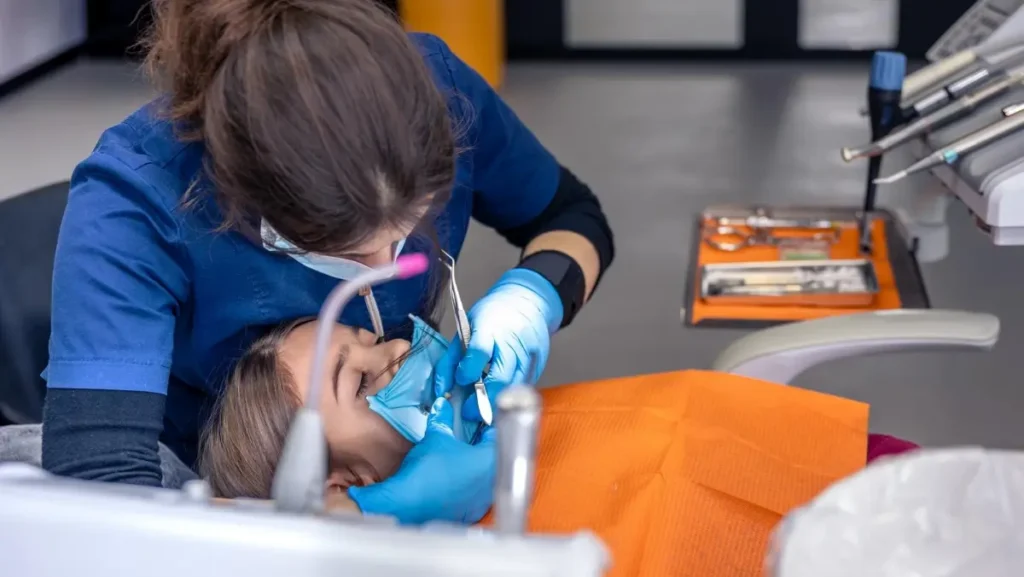Sedation dentistry is a specialized approach designed to help children and individuals with special needs receive necessary dental care in a comfortable and anxiety-free environment. Many patients, especially young children, experience dental anxiety, making it challenging to complete necessary procedures. Sedation techniques, including nitrous oxide, oral sedation, and Intravenous (IV) Sedation in Pediatric Dentistry, ensure a stress-free and safe experience.
According to studies, nearly 36% of people suffer from dental fear, which often results in delayed or avoided treatments, leading to severe oral health issues. For children and individuals with physical, developmental, or cognitive conditions, sedation dentistry provides an essential pathway to maintaining optimal oral health without distress or discomfort.
Nitrous Oxide (Laughing Gas)
Nitrous oxide, commonly known as laughing gas, is one of the safest and most effective sedation methods used in pediatric and special needs dentistry. It helps in calming anxious patients while allowing them to remain conscious and responsive throughout the procedure.
- Mild Sedation: The gas induces a relaxed state that significantly reduces anxiety and stress while keeping the patient awake and cooperative throughout the entire dental procedure, making it ideal for minor treatments that require patient participation.
- Quick Onset & Recovery: The effects of Nitrous Oxide Inhalational Sedation for Children begin within minutes of inhalation, providing immediate relief from anxiety and fear. After the procedure, oxygen is administered to eliminate residual gas, ensuring a fast recovery with no lingering drowsiness or impairment.
- Safe & Non-Invasive: The administration involves a small nasal mask, which eliminates the need for needles or intravenous access. It is widely recognized as one of the safest sedation methods, particularly for children and individuals with special healthcare needs.
Oral Sedation
Oral Sedation for Children involves administering medication in liquid or pill form to help reduce anxiety before and during a dental procedure. This technique is commonly used for patients who require a deeper level of relaxation but do not need full unconsciousness.
- Effective Anxiety Reduction: Oral sedatives promote a deep sense of calm and drowsiness, allowing patients to remain fully relaxed yet responsive throughout the dental treatment. This method is particularly beneficial for children who have difficulty sitting still for extended periods or those with heightened dental anxiety.
- Customizable Dosage: The medication dosage is carefully adjusted based on the patient’s age, weight, medical history, and level of anxiety, ensuring a tailored and highly effective sedation experience for every individual.
- Minimal Side Effects: Although Oral Sedation for Children may cause slight drowsiness and mild grogginess after the procedure, it is well-tolerated and considered a safe option for pediatric patients and individuals with special needs who require additional support for dental care.
IV Sedation & General Anesthesia
Intravenous (IV) Sedation in Pediatric Dentistry and general anesthesia are deeper sedation techniques used for more complex dental treatments or for patients who cannot tolerate dental procedures due to anxiety or medical conditions.
- IV Sedation: This method involves the direct administration of sedative drugs into the bloodstream through an intravenous line, providing a deeper level of relaxation while still allowing the patient to remain responsive. It is particularly beneficial for complex dental procedures, such as multiple extractions or root canal treatments, where patient cooperation is crucial.
- General Anesthesia: In cases where complete unconsciousness is necessary, general anesthesia is administered under the supervision of an experienced anesthesiologist. This method is typically recommended for patients with severe dental anxiety, those with special healthcare needs, or individuals undergoing extensive dental work that requires a pain-free and unconscious state.
- Continuous Monitoring: Throughout the procedure, a highly trained team closely monitors vital signs, including heart rate, oxygen levels, and blood pressure, to ensure maximum patient safety. Post-procedure recovery involves a carefully supervised awakening period, ensuring a smooth transition back to full consciousness with minimal discomfort.
Special Needs Dentistry
Special needs dentistry is a specialized field that focuses on providing comprehensive oral healthcare for individuals with physical, developmental, cognitive, or sensory impairments. This ensures equal access to high-quality dental care in a compassionate and accommodating setting.
- Tailored Treatment Plans: Every patient receives a highly personalized treatment plan that considers their unique medical history, behavioral challenges, sensory sensitivities, and comfort requirements to ensure a smooth and stress-free dental visit.
- Specialized Training & Equipment: Dental professionals in this field undergo extensive training to handle various medical conditions, utilizing advanced adaptive techniques and specialized dental equipment designed to accommodate diverse physical and cognitive needs for optimal patient care.
- Supportive & Comfortable Environment: Clinics specializing in special needs dentistry are designed to provide a sensory-friendly atmosphere with features like dimmed lighting, quiet treatment areas, and visual supports to minimize anxiety triggers and create a positive experience for both patients and caregivers.
Conclusion
Sedation dentistry and specialized care for individuals with special needs play a crucial role in ensuring positive dental experiences and long-term oral health. By utilizing advanced sedation techniques, patients can receive essential treatments without fear or distress. Whether through Nitrous Oxide Inhalational Sedation for Children, oral sedation, IV sedation, or general anesthesia, these methods make dental visits accessible and stress-free. Special needs dentistry ensures that all patients receive the care they deserve with compassion and expertise. Prioritizing comfort and safety, these approaches foster a lifetime of healthy smiles, improved oral hygiene, and increased confidence in seeking dental care.





